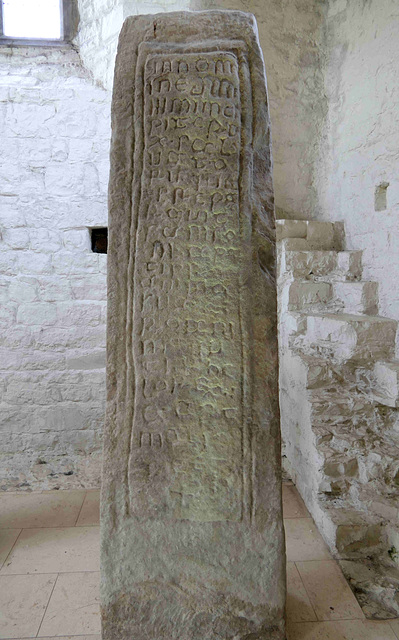Saint Brides Major - St Bridget
Mawdlam - St. Mary Magdalene
Margam Abbey
Margam Abbey
Margam Abbey
Margam Abbey
Eglwys Gymyn - St Margret
Tenby
Tenby
Tenby - Five Arches Gate
Tenby
Tenby - St Mary
Tenby - St Mary
Tenby - St Mary
Tenby - St Mary
Tenby - St Mary
Green Bridge of Wales
Pembrokeshire Coast
Gors Fawr
Gors Fawr
Mynachlog-ddu - St Dogmaels
Pentre Ifan
Pentre Ifan
Llantwit Major - St Illtyd
Llantwit Major - St Illtyd
Llantwit Major - St Illtyd
Llantwit Major - St Illtyd
Llantwit Major - St Illtyd
Llantwit Major - St Illtyd
Llantwit Major - St Illtyd
Ewenny Priory
Ewenny Priory
Ewenny Priory
Ewenny Priory
Ewenny Priory
Ewenny Priory
Llandaff Cathedral
Llandaff Cathedral
Llandaff Cathedral
Llandaff Cathedral
Llandaff Cathedral
Llandaff Cathedral
Llandaff Cathedral
Llandaff Cathedral
Llandaff Cathedral
Location
Lat, Lng:
You can copy the above to your favourite mapping app.
Address: unknown
You can copy the above to your favourite mapping app.
Address: unknown
See also...
Keywords
Authorizations, license
-
Visible by: Everyone -
All rights reserved
-
43 visits
Llantwit Major - St Illtyd


St Illtyd's Church is a church complex on the site of the oldest college in the United Kingdom. Today it is generally believed to have been founded around 508 AD by St Illtud. The present church building was constructed by the Normans in the 11th century, with parts rebuilt in the 13th and 15th centuries.
The college is said to have been attacked by the Danes in 987. In the 11th century, the area was conquered by the Norman nobleman Robert Fitzhamon. During the conquest, the wooden college and church were destroyed and the foundations transferred to the newly founded Tewkesbury Abbey, Fitzhamon's personal project. The Normans eventually rebuilt a parish church on the ruins of the old college around 1100, but the college greatly diminished in size and importance.
In the 13th century, a low tower was added at the east end and a second chapel was built next to the first. The old west chapel continued to be used as a parish church, but the new east chapel was used by the monastic community. Around 1400, side aisles were added to the eastern monastery church and the roof and tower were raised to their current height. In the 16th century, during the dissolution of the monasteries, the monastic community was dissolved and the east chapel was taken over as a parish church. During the dissolution and the later Puritan period, the interior of the church fell into disrepair and many of the murals and statues were destroyed.
The Samson Cross is 2.15 meters high, and was probably once capped by a wheel cross, which is now missing. It is inscribed on the west and east faces. The West has the inscription "+SAMSON POSUIT HANC CRUCEM + PRO ANIMA EIUS+" = "Samson placed his cross for his soul." This cross originally lay in the churchyard on the north side of the church.
The college is said to have been attacked by the Danes in 987. In the 11th century, the area was conquered by the Norman nobleman Robert Fitzhamon. During the conquest, the wooden college and church were destroyed and the foundations transferred to the newly founded Tewkesbury Abbey, Fitzhamon's personal project. The Normans eventually rebuilt a parish church on the ruins of the old college around 1100, but the college greatly diminished in size and importance.
In the 13th century, a low tower was added at the east end and a second chapel was built next to the first. The old west chapel continued to be used as a parish church, but the new east chapel was used by the monastic community. Around 1400, side aisles were added to the eastern monastery church and the roof and tower were raised to their current height. In the 16th century, during the dissolution of the monasteries, the monastic community was dissolved and the east chapel was taken over as a parish church. During the dissolution and the later Puritan period, the interior of the church fell into disrepair and many of the murals and statues were destroyed.
The Samson Cross is 2.15 meters high, and was probably once capped by a wheel cross, which is now missing. It is inscribed on the west and east faces. The West has the inscription "+SAMSON POSUIT HANC CRUCEM + PRO ANIMA EIUS+" = "Samson placed his cross for his soul." This cross originally lay in the churchyard on the north side of the church.
Paolo Tanino has particularly liked this photo
- Keyboard shortcuts:
Jump to top
RSS feed- Latest comments - Subscribe to the comment feeds of this photo
- ipernity © 2007-2025
- Help & Contact
|
Club news
|
About ipernity
|
History |
ipernity Club & Prices |
Guide of good conduct
Donate | Group guidelines | Privacy policy | Terms of use | Statutes | In memoria -
Facebook
Twitter

Sign-in to write a comment.